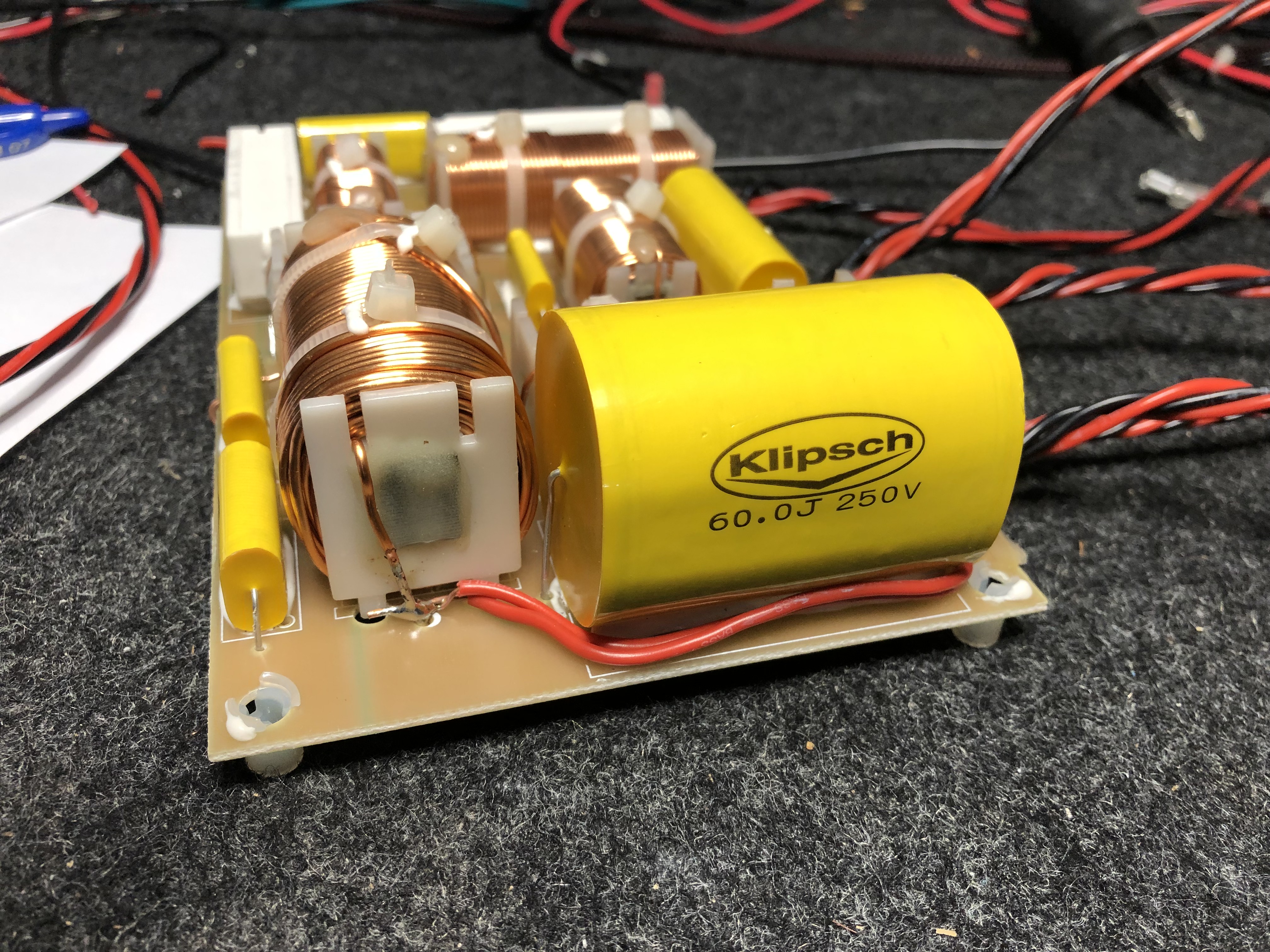The big Klipsch speakers are very revealing and shamelessly unforgiving when presented with less than optimium characteristics from other components -- including the room. As several contributors here have correctly stated in this thread, the "aggresssive" Klipsch sound can be tamed by placing attention on other factors contributing to overall sound quality.
A word about horn dampening:
We’ve successfully completed this process on a large number of Klipsch speakers with consistent results that are highly predictable. The horn bodies share the same interior space as the woofer on several models. The woofer’s rear wave creates sympathic resonances with the horn bodies causing them to vibrate. You can walk up the speaker and place your hand on the midrange horn while playing and you will feel the vibrations. And, yes, you can hear them as well. The mid and tweeter drivers do create vibrations as well, so I recommend dampening the horns on all models regardless of whether the woofer shares the same cavity. The energy emmanating from the vibrating horn body creates waves that may be in phase with the primary signals causing an exaggeration of those frequencies. Or, they can be out of phase which creates a cancelling or suck out of those frequencies. The tonality of the speaker changes as a result. In addition, these vibrations haphazardly slung about in the listening space crush detail and stomp all over spatial queues. Detail, focus and imaging all pay the price. And, yes, when things are too loud in a certain range of the music, it can have the sonic attribute of sounding "bright."
The application of Dynamat is a simple DIY operation. The Klipsch horns are held in place with machine screws with threaded inserts. Not much chance of damaging something or waddling out screw holes in wood. The mid connections are via a push in terminal and the tweeter is connected via spade connectors. I’d recommend taking photos of the connectors to eliminate the prospect of miswiring them. With a carton knife, you can cut strips of Dynamat and get after it. While the tweeter is out, I’d recommend snipping off the space connectors and direct silver solder the cables to the tweeter lugs before installing it back into the cabinet. This will add about 15 minutes total to the project. Yes, tweeter detail will audibly improve. The first time you fire up your "new" Klipsch speakers you will hear a warmth that you had not experienced before, with the bonus of added focus, space, and less listening fatique.
As far as voiding the warranty is concerned, I would place the chance of a driver failure at very close to zero. Warranty work, if needed involves Klipsch sending a new driver to the dealer, and the "defective" one sent back to Klipsch. If you bought these from a dealer, the chances are you’ll get a blessing on the upgrades. Rather than bring the entire speaker into the dealer, it is much simplier to provide them with the raw driver. And, when they get a replacement, they’ll hand it back to you. If you ordered them online, I’m pretty certain this would happen the same way. Packing up and shipping an entire speaker system for in-warranty service is impractical. But, my experience with the big Klipsch speakers is that they will hurt you before you can hurt them.
This does not negate placing attention on other elements of your system. This is just a good place to spend $10 with a notible improvement in sound quality.
